Like clockwork, day one of your cycle begins. Before you can drag yourself out of bed, you anticipate the worst: period cramps. The thought of a pain-free period seems impossible, right? Not so fast. This goes without saying, but hormone health is vital to our well-being. Through every stage of life, hormones play a role. They regulate everything from our sex drive to our metabolism. Our hormones are powerful, but they’re equally sensitive. They’re influenced by a variety of lifestyle factors. One—or all—of these factors (diet, exercise, sleep, etc.) can throw your hormones out of balance. Over time, this imbalance takes a toll. Hello, period bloat, crippling cramps, and tender breasts. Do any of these sound familiar? If so, you may have an underlying hormone imbalance. Luckily, you can hack your way to a better period. Ahead, we’re digging into foods that help with period cramps. Because after all, food is medicine.
Feature image from our interview with Kate Waitzkin by Michelle Nash.

Disclaimer: Please use this as a guide only. This article is intended for educational purposes only, and is not designed to diagnose, treat, prevent or cure any condition. If you are experiencing any abnormal period symptoms, please seek help from a qualified healthcare professional.
What is the menstrual cycle?
As women, we’re conditioned to believe that having a period is a painful, frustrating, and shameful experience—but it shouldn’t be any of those things. In fact, my goal is to empower you to take your cycle into your own hands. Because knowledge is power.
Get to know your flow and your flow will become a seamless part of your life. These are the four main phases of the menstrual cycle:
- Menstruation phase
- Follicular phase
- Ovulation phase
- Luteal phase
Download our cycle syncing planner to support your body throughout the month.
Changes During the Menstrual Cycle
Each month—during the years between puberty and menopause—a woman’s body goes through a number of changes. In essence, to get ready for a possible pregnancy. This series of hormone-driven events is called the menstrual cycle. During each menstrual cycle, an egg develops and is released from the ovaries. The lining of the uterus builds up. If conception doesn’t happen, the uterine lining sheds during a menstrual period. Thus, the cycle starts again. The length of each phase can differ from woman to woman, and it can change over time.


Length of a Normal Period
This depends. For context, the length of your menstrual cycle is calculated from the first day of your period to the day before your next period starts. Menstrual flow might occur every 21-35 days and last 3-7 days. For the first few years after menstruation begins, long cycles are common. On average, a very healthy cycle looks like 28-30 days with bleeding lasting approximately five days. That said, every woman’s body is different.
Why Women Get Period Cramps
Menstrual cramps happen because of contractions in the uterus (which is a muscle). If it contracts too strongly during your menstrual cycle, it can press against nearby blood vessels. In turn, this briefly cuts off oxygen to the uterus. This lack of oxygen causes pain and cramping. Plus, hormone-like substances (called prostaglandins) trigger muscle contractions. Women with higher levels of prostaglandins typically experience more severe menstrual cramps. That’s one of the reasons why hormone balance is key!
Reasons for an Irregular Menstrual Cycle
As mentioned, every woman’s menstrual cycle is different. Some women get their period at the same time each month. Others are more irregular. Some women bleed more heavily or for a longer number of days than others. Your menstrual cycle can also change during certain times of your life. That said, many women find it helpful to track their periods. Eventually, the goal is to sync your cycle with your life. Any of these things can alter your menstrual cycle:
- Birth control. The birth control pill may make your periods shorter and lighter, while on some pills, you won’t get a period at all.
- Pregnancy. Missed periods are one of the most obvious first signs that you’re pregnant.
- Polycystic ovary syndrome (PCOS). This hormonal imbalance prevents an egg from developing normally in the ovaries. PCOS causes irregular menstrual cycles and missed periods.
- Uterine fibroids. These noncancerous growths in your uterus can make your periods longer and heavier than usual.
- Eating disorders. Anorexia, bulimia, and other eating disorders can disrupt your menstrual cycle and make your periods stop.
This is not an exhaustive list of reasons why a menstrual cycle may be irregular. If you sense your period is irregular (short, long, nonexistent, or you spot between cycles, please reach out to your healthcare provider, or let’s work together!).


Cycle Syncing for a Better Period
Before we dive into foods that help with period cramps, let’s talk about cycle syncing. Cycle syncing is a practice whereby you adjust your diet and exercise routine (and even your social calendar!) around different phases of your menstrual cycle. In turn, this supports your hormones and optimizes both your mental and physical health. This concept was coined and trademarked by Alisa Vitti, Functional Nutritionist, HHC, AADP. Once you determine where you are in your cycle, you can start to learn how to structure your month around your body’s natural rhythms with this cycle tracking guide.
Seed Cycling to Regulate Your Menstrual Cycle
Speaking of cycle syncing, have you heard of seed cycling? In essence, seed cycling is a growing health trend, claimed to balance hormones, boost fertility, and ease symptoms of menopause. It involves eating flax, pumpkin, sesame, and sunflower seeds at different times of the month. Theoretically, seed cycling either enhances or inhibits the production of estrogen and progesterone in the body. In turn, balancing and optimizing your hormones, along with relieving symptoms due to hormonal imbalance.
The easiest way to seed cycle is via Funk It Wellness. They do all the hard work for you. No need to buy seeds and grind them at home! As you can guess, these seeds are included as foods that help with period cramps.
10 Foods That Help With Period Cramps
Without further ado, these are the top 10 foods that help with period cramps—plus delicious recipes to spark creativity in the kitchen. These ingredients are easy to digest, anti-inflammatory, help balance blood sugar, and more.

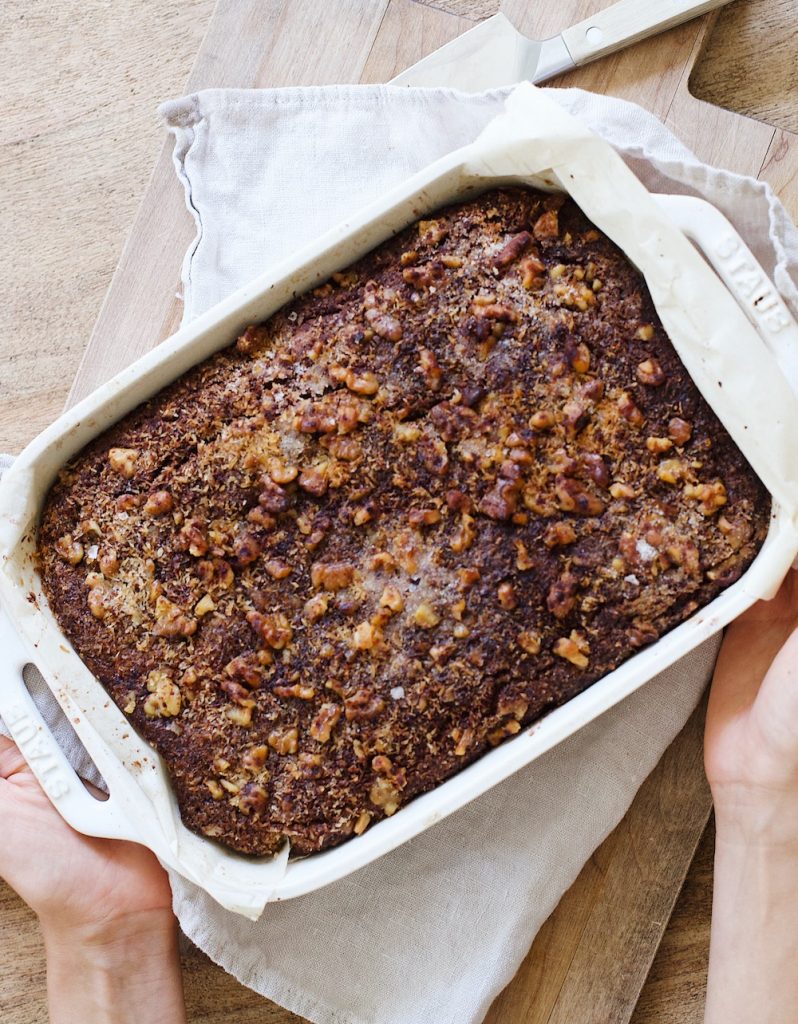
Bananas
Bananas contain vitamin B6 and a healthy dose of potassium, which can help relieve your bloating and cramping symptoms. They also contain magnesium and calcium. That’s three out of four nutrients you need to ease muscle cramps! No wonder bananas are a popular, quick choice for cramp relief.
Recipe: Healthyish Chocolate Chunky Monkey Banana Bread

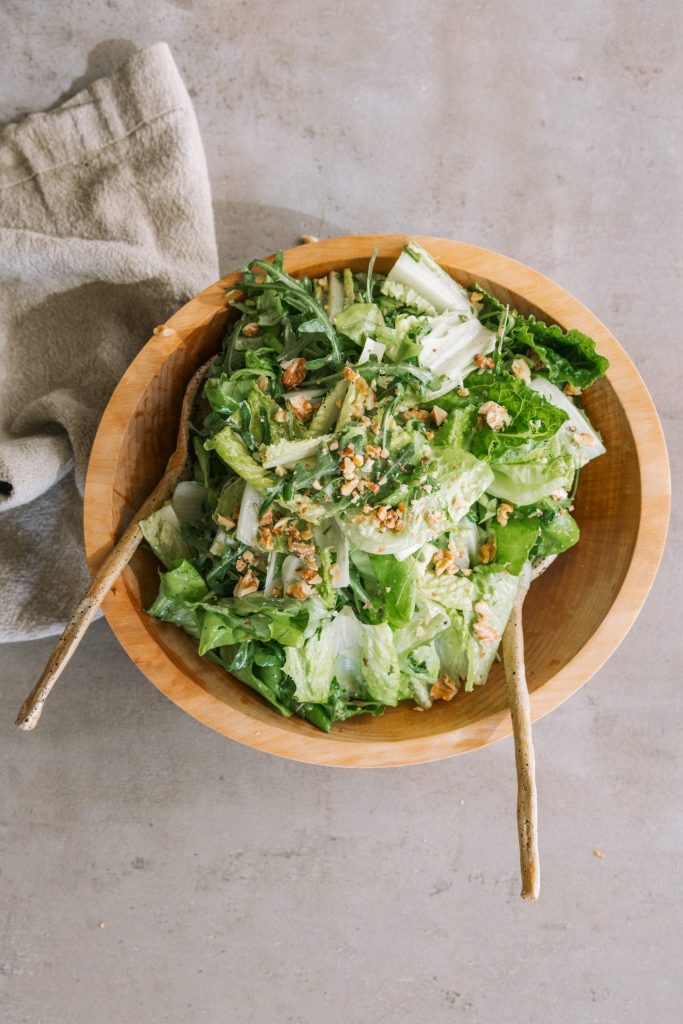
Dark, Leafy Greens
Leafy greens are rich in calcium and magnesium. Now’s the time to add kale, spinach, or broccoli to your plate. Eating leafy greens may also help with menstruation cramps, as studies show that eating foods high in calcium can help relieve pain from periods.
Recipe: The Best Simple Green Salad


Lemons
Lemons, like all citrus, are rich in vitamins—particularly, vitamin C. Vitamin C helps your body absorb iron from your food into your bloodstream and tissues. Because you’re losing blood during your period, it may be helpful to have some extra vitamin C. Lemons also contain fiber, which makes them a great food for preventing muscle spasms.
Recipe: Lemony Spring Pasta Salad with Olives, Artichokes, and Bacon

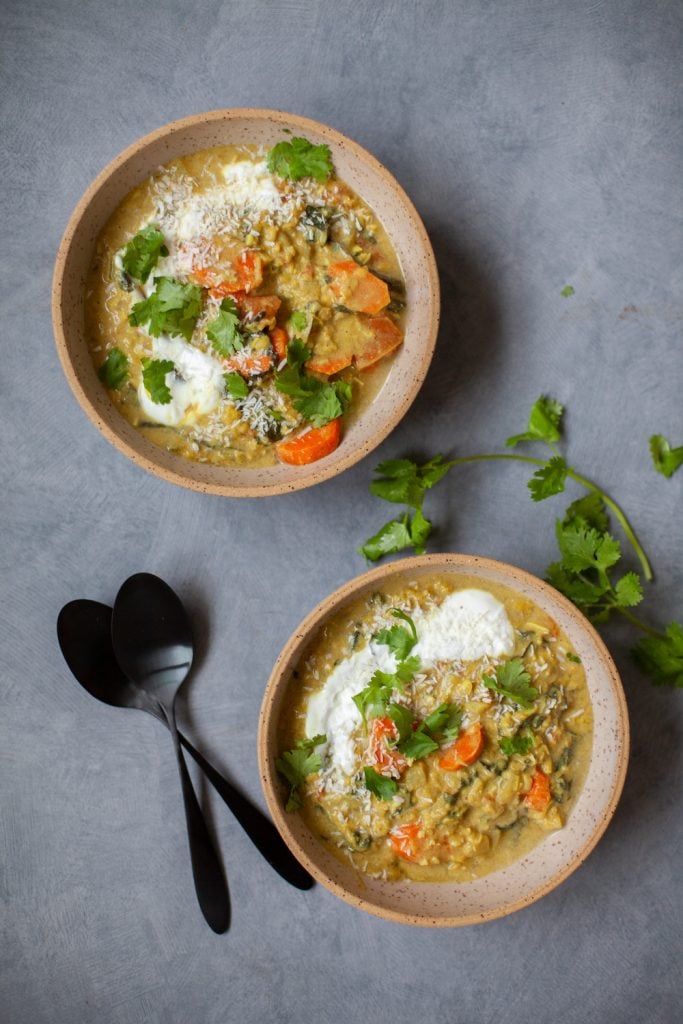
Lentils
Lentils are rich in fiber and iron. They’re also a great source of protein for vegetarians. While menstruating, iron levels take a dip, so eating iron-rich foods can help counteract this drop. Plus, legumes are rich in thiamine, which can be powerful in fighting period pain.
Recipe: Coconut Curry Red Lentil Soup


Oats
Ease cramps from the moment you wake up. Oats are delicious and nutritious, whether you enjoy them as oatmeal, in (breakfast) cookie form, or in a healthy batch of homemade granola. Not only are they full of fiber—which helps you feel full for longer after eating—but they’re also a good source of zinc and magnesium. Magnesium, specifically, helps relax blood vessels and regulate serotonin.
Recipe: Baked Banana Cashew Oatmeal

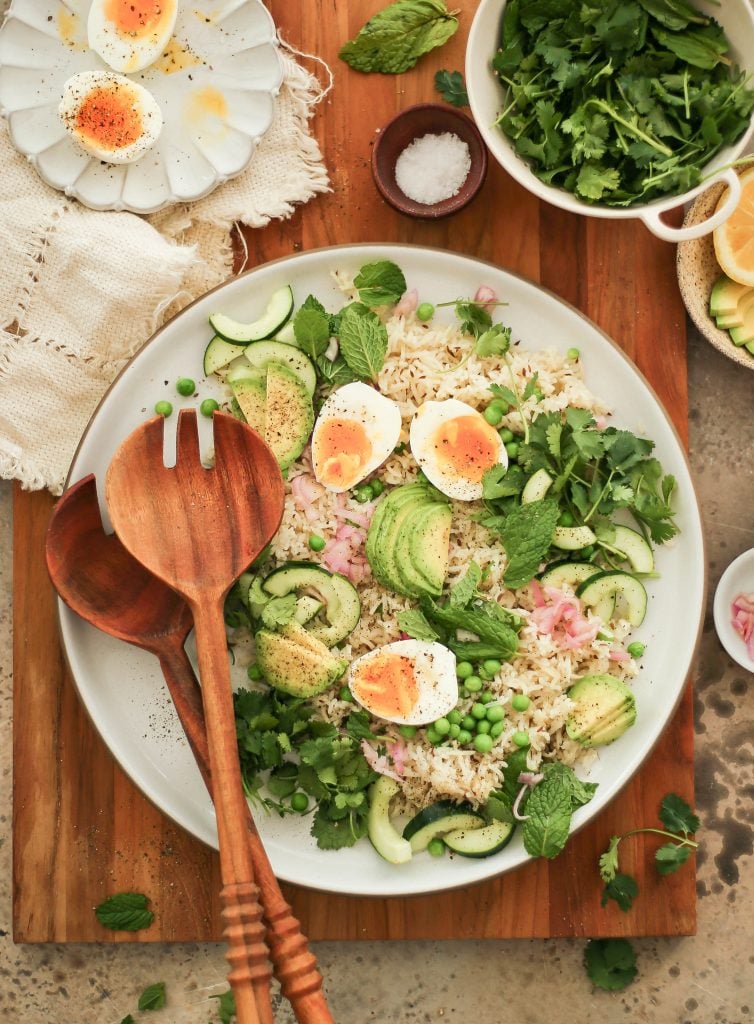
Eggs
Eggs contain vitamins B6, D, and E, which all work together to fight off the symptoms of PMS. They’re also packed with protein, which is an added nutritional bonus to aid in balanced blood sugar.
Recipe: Spring Rice Salad

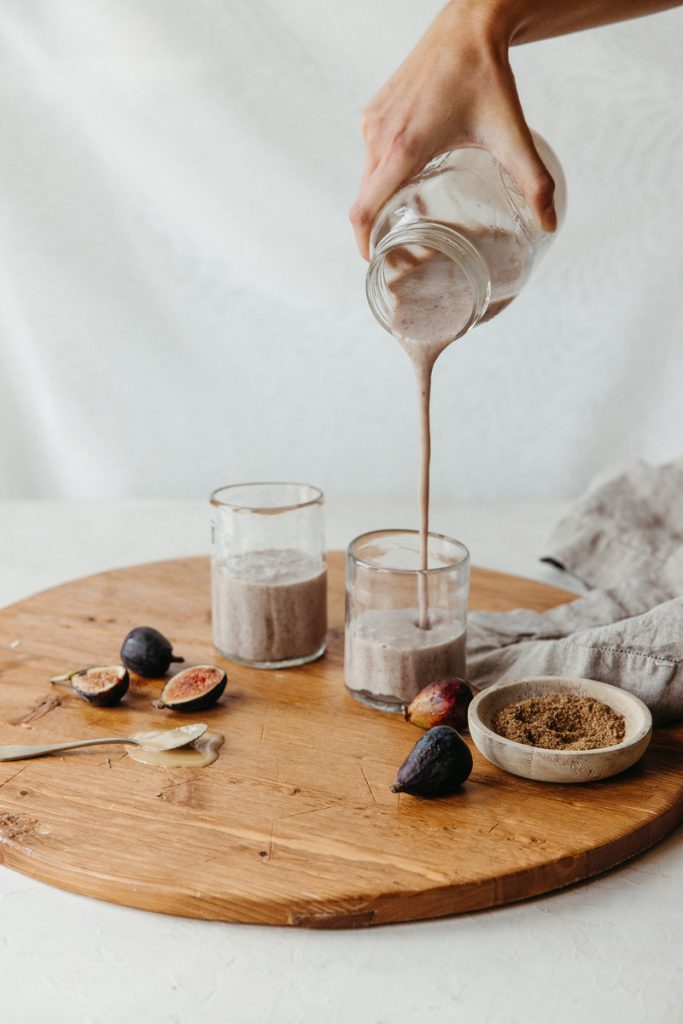
Ginger
No surprise, here! Ginger is a culinary and medicinal powerhouse. Today, it’s commonly recommended as a home remedy for a variety of ailments, including menstrual cramps. Because it has anti-inflammatory and pain-relieving properties, it may help with both pain and bloating associated with a woman’s menstrual cycle.
Recipe: Get Figgy With It Smoothie


Dark Chocolate
If you needed an excuse to eat chocolate on your period, this is it. Dark chocolate may help ease menstrual cramps due to its high magnesium content. Magnesium helps relax muscles and may stop the production of compounds that signal cramps. Copper, another nutrient found in dark chocolate, may also play a role.
Recipe: Adaptogenic Hot Chocolate


Walnuts
Walnuts help with period pain relief, thanks to their high omega-3 content. The anti-inflammatory fats tackle cramps naturally, so keep a bowl on hand for convenient healthy snacking, adding to a bowl of yogurt, tossing in a salad, or stirring into a grain bowl for a quick dinner side dish.
Recipe: Apple Walnut Salad


Wild-Caught Salmon
Like walnuts, wild-caught salmon is rich in omega-3 fatty acids. Salmon is also one of the few foods with vitamin D! This fatty fish helps with PMS symptoms. It’s ideal to eat salmon the week before your period. It also has anti-inflammatory effects, releasing muscle tension, keeping your cramps in check, and reducing bloating.
Recipe: Grilled Salmon with Stone Fruit Salsa





